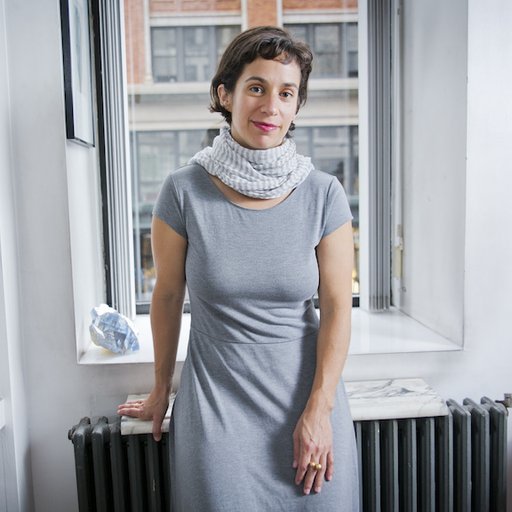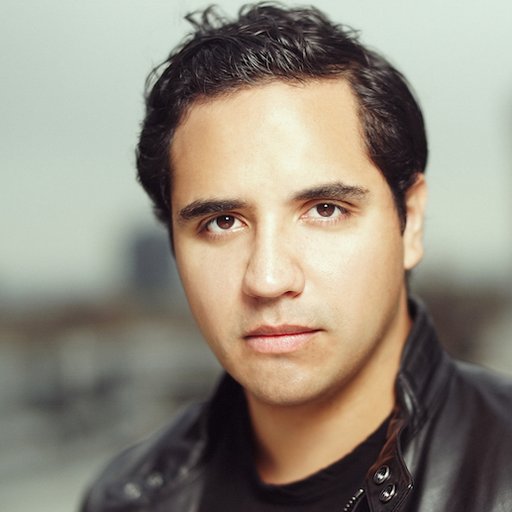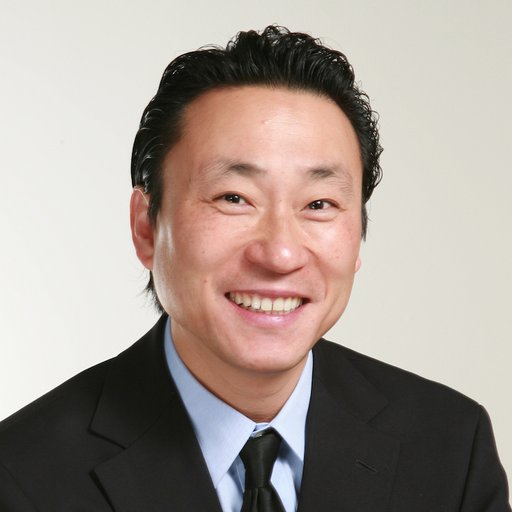Returning this year with the fourth edition of EXPO CHICAGO, the Windy City's great hope of a contemporary art fair, Tony Karman is bullish about the Midwest cultural capital's viability as an international collector hub—something that he knows was true for years with Art Chicago, which he previously led, until that Stateside answer to Art Basel went aground in 2012 as commerce seemingly concentrated on the coasts. By many indications, Karman's bet is paying off, with the fair boasting an ever-growing exhibitor list, a gleaming roster of blue-chip galleries, and an avid audience of collectors and curators alike.
To find out more about how the fair is faring, we spoke to the savvy and infectiously upbeat EXPO CHICAGO director about what it takes to be an engine of art-world change in the heartland.
One of the fun things about art fairs is that they don’t only serve as gathering places for collectors and art professionals, they also serve as great dipsticks for where an art market stands at a given moment. Coming into your latest fair, what were the lessons you took away from last year’s event, and what are you expecting this year?
Last year was a very important year for us, further establishing both our strength as a marketplace and our ability to draw in an international audience. This is not a regional fair, it’s an international fair that happens to serve the Midwest region but also draws in collectors from the coasts and from Latin America, South America, and Europe. Last year we proved with our programming and the audience we drew that we were building in that direction, and that set the table for this fourth edition, which will have even fuller international programing.
We also know we’re seeing a great amount of press coming out of Europe and South America, and that we’re getting collectors that we spent a lot of time cultivating not only in Mexico but also in other parts of Latin America. For these collectors, coming out to Chicago is an easy trip. We’re also getting RSVPs from European collectors who we wanted to see in Chicago for a long time—and that, I think, is just the natural course of things. Chicago is a great international city with great international resources, and as we continue to mature as a fair so does that message we’re sending out to the world.
Looking at the increased roster of exhibitors this year, you can see over 60 galleries that weren’t in the fair last year—and this includes heavy-hitters like Pace, Salon 94, Steve Turner, Pearl Lam, and Travesia Cuarto. What is it that changed in your gallery outreach and cultivation this year?
Again, there’s no question that what we’re building is helped by the great art tradition of the city, the institutions here, the collectors here, and the art schools here that are graduating so many artists. There’s such a renewed gallery and artist scene here—the environment is very different from what it was even several years ago. Landing these galleries is part of the natural course, and while I am grateful for the leading, mid-career, and emerging galleries that have been with us for the beginning, I’m equally interested in expanding by providing an annual spot for new exhibitors.
One thing that might be interesting to you, I think, is that there are some galleries that have put us on a rotation, not because of sales here but because of other commitments they have, and I want to make sure that paradigm is embraced too. I would be very happy if there were rotating galleries of the highest quality every other year by virtue of their calendar commitments. At the same time, we need to make sure that the anchors that have really given this show a great deal of weight—the Matthew Marks, the Zwirners, the Paces—have an annual home.
Are these galleries finding the collector community here to be lively and responsive? How was business last year? What was the highest sale, to set an easy benchmark?
I don’t know. I know that sounds like a dodge, but it’s not. As you may notice when we send out a post-fair wrap up, we don’t include what was sold. If the gallery wants to share that, that’s their business. But there’s no question that we wouldn’t even be here for a fourth edition if bills weren’t paid at the highest level, and at the quantity that would sustain so many galleries to re-up. A key test of our success has everything to do with the renewal of galleries we have year-to-year, and the new galleries that want to be in the fourth edition. At the same time, I know for sure that there were several multimillion-dollar sales that we didn’t herald, because I know where the work was placed.
EXPO CHICAGO is predicated on the idea that there is a broad Midwest corridor of collectors that is underserved and that can be cultivated and then lucratively catered to by a Chicago art fair. What anecdotal evidence is there to suggest that the strategy is coming to fruition?
We know it’s working. One indicator is that we spend a great deal of time and effort reaching out to many of the regional cities that have a great collecting base—like Saint Louis, Kansas City, Minneapolis, Dallas, Houston, Cleveland, Denver, Toronto, and Cincinnati—through dinners and collection visits, and it’s easy to see that these are extraordinary cities with collectors and great institutions that we want to see represented here. Proximity is in our favor. Chicago is strategically located, in that it’s an easy flight from both coasts, and a very easy trek from all the cities I mentioned and more.
We’ve also worked on institutional collaborations in the region, like a project with MOCA Cleveland this year and another with (CAM) St. Louis in the past, and we’ve made sure to open our arms to these curators and say come back. Also, this is the inaugural year that we’re having something we call the Midwest Curatorial Forum, with EXPO CHICAGO flying in and housing 25 top regional curators and giving them a full itinerary that includes coming to the fair and attending a large luncheon with their other curatorial colleagues.
The hope is that colleague-to-colleague discussions will take place, and that those will foster additional collaborations or perhaps a project for next year. And it was a strategic maneuver not to include curators from Europe or elsewhere abroad—we want to make sure that we’re turning out the greater Midwest.
But to answer your question in a more pointed way, there are absolutely significant collector bases in the cities that I mentioned who either are or are not attending other fairs, and we provide an easy opportunity to connect them to international galleries in a perfect timeframe. We have gotten high marks from our exhibitors about the audience that they’re seeing.
How would you describe this collector audience, and how would you say its demographic has changed since you started the fair four years ago?
It’s hard to make one big observation about greater Midwest collectors, but I would say this: there is long tradition of collecting in the cities that I have mentioned, and their collections are not necessarily provincial—they are very contemporary. There is no question about the buying power, and the collecting power, in Chicago, and not just for the fair weekend. The galleries in New York and London and Paris and L.A. surely know they’re there, but it’s my opportunity to make the formal introduction by bringing them to buy at the fair.
The other hope is that this collector base is aggressive and travels to other cities and other fairs. I think that speaks well for our future. But, again, this is already a very sophisticated collecting base that is willing to take risks and embrace the younger galleries that are part of our Exposure section. Chicago collectors in particular have always been aggressively on the vanguard and adventurous in collecting.
Earlier this year, the Hiscox Online Art Trade Report suggested that among new collectors, investment value is becoming an ever-increasing, if not the dominant, motivator for buying art, at least in an online context. How does a fair cater to this instinct?
We don’t promote an investment angle—what we do promote is that we have extraordinary work from galleries around the world. I’m sure the amount of articles that speak to the ever-expanding art world and ever-supportive auction records have piqued the curiosity of some individuals about art as another investment model. From the fair’s standpoint, the most important thing is that new collectors understand that we’re giving them access to highly established galleries so they can begin that process. If an individual is looking to acquire a work not only for its beauty and the thrill of collecting but also with the hope that they’re creating an asset for their family, there is no better place than an art fair with an international art dealer who has done their job to build a great relationship with the artist. It’s our job to support our exhibitors to enable that process as much as we can.
As for the Chicago art scene itself, it seems there’s quite a bit of excitement this fall, with the eyes of the world on Theaster Gates’s new project and the buzz around the new Patron gallery, for instance. What other signs of growth are there in the city’s art milieu, and how has it changed since the fair opened?
That is a great question. There’s no doubt that the fair feeds the ecosystem, since it attracts curators and collectors who not only will be coming to the fair but also exploring the city and its institutions, galleries, and artists studios. It’s a convening moment that can quickly feed that ecosystem, and we should really be proud that artists like Theaster Gates, Kerry James Marshall, Nick Cave, and Tony Lewis or Judy Ledgerwood, for that matter, are living and working here. Art has always been a kind of quiet strength for Chicago, but what’s different now is that we have a lot more eyes on our city.
Having extraordinary art programs at the University of Chicago and the School of the Art Institute of Chicago and the University of Illinois also adds an important element that shouldn’t be overlooked. Couple that with the caliber of curators who are now working with the city’s institutions and—maybe it’s an overused phrase—Chicago is really having an extraordinary art moment. Many artists are finding that they don’t have to move to other art cities to have a career—that they can actually stay in Chicago and still work with international galleries from around the world, and still connect with international galleries, curators, and collectors when we bring them to town every year.
These days, there is an overabundance of art fairs, with new ones opening all the time in an effort to leverage untapped markets. One direction we’ve seen lately among new fairs is an attempt to access tech money, as with the events in Silicon Valley and in Seattle, where a fair launched early this year with the express purpose of catering to Paul Allen and his Vulcan cronies. What do you make of this strategy?
Let me answer this a little differently. Obviously, from a strategic perspective, any exhibitor will want to reach new collectors—but the tech industry in Chicago is just as strong as it is in any of those cities you mentioned. In addition to Google and others moving in, Chicago also leads the way in terms of age-old investment and VC investment. And it’s not simply about chasing tech, because having a tech community doesn’t mean there’s a collector base there. It’s just one other vector of growth that any gallery should look at in terms of potential new outlets for connoisseurship and collectors.
This is where I come back to Chicago: we have an amazing tech industry, but also amazing finance, real estate, and manufacturing. We have collectors who have been collecting for generations, and they provide an extraordinary foundation. Again, I’ll go back to the fact that we’re in our fourth edition because our third edition drew the collectors and curators that our exhibitors want to see. We’ve proven that we’re in a great place, and I hope we are here to stay for a long time.
What are some tech companies that are headquartered in Chicago?
You’ve got LightBank, you’ve got Grubhub, you’ve got Groupon, and a whole host of tech incubators.
Is tech part of your thinking when it comes to outreach?
I’m going to be real honest with you: it’s been one of the hundred ways we want to make sure we are reaching a new audience, or an audience that the exhibitors are already taking a risk to find at this fair. As I have always said, all of this is built upon the backs of the art dealers exhibiting at this fair, and it’s my responsibility to do all that I can to make sure they have the best opportunities not only to meet the right collectors and curators but also to hopefully sell and place art how they want.
My job is to make sure every possible corner—regional, local, national, international—is primed to support the exhibitors' investment in EXPO CHICAGO. I believe very strongly and will never forget that it is my responsibility to work in partnership with them and to do all that we can to turn out new and existing collectors. So I looked at every possible industry that I can touch to make sure that we do our job.
Going back to the proliferation of art fairs today, there is now a debate as to whether the gallery might offset the cost of doing art fairs—which are becoming more and more indispensable—and other rising fixed costs by taking a larger percent of the revenue that they’ve traditionally split 50/50 with their artists, going so far as 70/30. What is your view on that?
Well, we could talk for hours about this, but in any industry innovation and change is inevitable. There’s no question that there are challenges as galleries face escalating costs of staffing and space and of producing exhibitions for their artists, and there’s no question that art fairs have over the last 15 years become even more critical that their bottom line. One thing I shouldn’t do is speak on behalf of an art gallery, because I haven’t owned one. But I have worked with them very closely and can understand the challenges as they relate to this new paradigm.
What does it mean to be represented by a gallery, and what does it mean to have these percentages, which have been under negotiation for generations? The importance of the art dealer should not be lost in this, and their role in driving this whole ecosystem—after all, it is the art dealer that is taking the risk on the artist and grooming that artist and putting money into developing that artist and working every aspect of the system to make sure that there are collectors who will both enjoy and collect their work. So I think that model might change to some extent.
But how an art gallery works with an art fair is an ongoing challenge that I truly understand. As I said before, I’m massively grateful that 70 percent of our art galleries want to return every year, so we can rely on having them in place. But if the other 30 or 40 percent is a rotating group of the top art galleries in the world every year, I think that is an extraordinary opportunity for the art fair, because it allows for a fresh face every year, with new works and new opportunities. And that’s what has happened. I think that it’s great for the collectors, it’s great for the fair, and it takes some pressure off the gallery.
Speaking of changes in the art-fair landscape, another international fair in another historic art capital has an opening in its top position—of course I’m talking about the Armory Show. You’ve been included in lists as a possible contender for the post. Is that something you’re interested in?
You know, I’m massively grateful to be included on a list like that, and I’m massively grateful that the writer identified some very nice aspects of what we’ve done in Chicago. My answer to your question, however, is that I have had many opportunities to do other fairs, but I feel strongly that my focus will always be Chicago. In the case of EXPO CHICAGO, not only do I own the fair but I also get to be the director. That is not to say that I wouldn’t be open to other things in the future, but I feel strongly that both the exhibitors that are taking a risk on this fair and the civic leaders and institutions that are behind this fair in Chicago should know that my chief concern is that this fair continues to build and will have a long life.
So, my long-winded answer is that my eye is always on Chicago and my heart and soul will always be here, but down the road it would be foolish not to say that I will always look to potentially innovate and do something new. I’m grateful to be included on that list, and you never know. But this is a big-town small town with a big international footprint, and there’s plenty of discourse and support here to make sure our future will be bright.



























